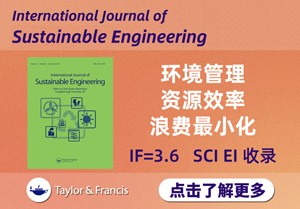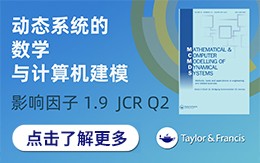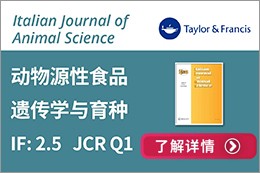Theatre Journal ( IF 0.8 ) Pub Date : 2024-07-23 , DOI: 10.1353/tj.2024.a932185 Gillian Redfern
Reviewed by:
- Cultures of Witnessing: Law and The York Plays by Emma Lipton
- Gillian Redfern
Written in lively, engaging prose that is equally authoritative and accessible, the central argument of Emma Lipton’s most recent monograph, Cultures of Witnessing: Law and the York Plays, is that the York plays use legal concepts of witnessing to promote ideals of citizenship in medieval York. Seeking to move scholarship on law and medieval drama beyond the accepted notion that the depiction of law in religious dramas generally reflects the corruption of earthly courts, Lipton persuasively theorizes that the plays also depict “virtuous witnesses, using them and other legalisms to promote local civic values and authority” (5). Thus, concepts of witnessing, and what or who makes a “good” witness, are uniquely interwoven with the York plays’ religious themes to bolster York’s sense of importance and promote local jurisdictional and legal powers, rather than monarchical, central ones. Lipton argues that this helped to articulate model citizenship in particularly local ways. Situating readings of selected dramas alongside legal treatises, sermons, confessional manuals, mirrors for princes, lyrics, conduct books, and all manner of textual forms of witness, Lipton explores how such texts and civic dramas informed and affected each other in site-specific ways in medieval York.
For example, in the first chapter, “Space and the Cultures of Witnessing in the York ‘Entry into Jerusalem,’” Lipton claims that the legal charters in the York Memorandum Books, kept in the guildhall, demonstrate York’s concerted effort to preserve local jurisdiction over central power. Lipton sees this echoed in the Entry into Jerusalem, as Christ’s presence in the city, alluded to by deictic references, sets the audience as “His” witnesses and puts “the neighbor and citizen—rather than king, cleric, or lawyer—at the center of legal practice” (44). However, as Lipton rightly remarks at the very end of this chapter, there were many groups of citizens (such as women, the poor, et al.) who were excluded by law from giving legal witness. Thus, where Lipton concedes that, in practice, such legal witnessing would only have been available to a “subset” of York’s citizens, perhaps that subset would be more recognizably described as the wealthy male elite of medieval York (45).
Given Lipton’s focus on the law and witnessing, it is perhaps unsurprising to see two chapters devoted to scrutiny of York’s sequence of trial plays (The Conspiracy, The Trial Before Caiaphas and Annas, Christ before Pilate 1, The Trial Before Herod, [End Page 254] and Christ before Pilate 2: The Judgment). Chapter 2, “Witnessing as Speech,” builds on extant scholarship that discusses the many legal terms and procedures entailed in these plays, considering them as “a record of embodied speech acts” (71), where the act of speaking (or accusing, or the reluctance to speak) essentially constitutes the plays’ action. These speech-actions, witnessed by the whole gamut of individuals constituting the audience in medieval York (incidental passersby, those within earshot, those actually watching the plays), are, according to Lipton, performative in multiple senses. They act as ethical guides by which York’s citizens, or populace during the plays’ performances, can learn how to control their own speech. By combining legal authority, religious authority, and theatrical conventions, the audience is further implicated in witnessing and adjudicating between paradigmatic characters such as Christ and tyrants such as Pilate or Herod. Lipton underscores the affective experience of late-medieval witnessing here with recourse to conduct literature and the governing, wisdom, and advice principles found in the mirrors for princes genre. Lipton gives an excellent close reading to argue for witnessing in these plays as both an experience and practice that promotes ethical self-governance over one’s own speech and that of others.
Chapter 3, “Witnessing and Legal Affect in the York Trial Plays,” builds on the work in the previous chapter, although it is distinct in that it explores the notion of false witnessing, which might lead to false justice, or a miscarriage of justice. Lipton’s points are supported by a...
中文翻译:

见证文化:艾玛·利普顿的《法律与约克戏剧》(评论)
以下是内容的简短摘录,以代替摘要:
审阅者:
-
见证文化:艾玛·利普顿的《法律与约克戏剧》 - 阿娇雷德芬
见证文化:法律和约克的游戏。艾玛·利普顿着。中世纪系列。费城:宾夕法尼亚大学出版社,2022 年;第 200 页。
艾玛·利普顿 (Emma Lipton) 的最新专着《见证文化:法律与约克戏剧》以生动、引人入胜的散文写成,既具有权威性又易于理解,其中心论点是,约克戏剧利用见证的法律概念来促进中世纪的公民理想。约克。为了推动法律和中世纪戏剧的学术研究超越宗教戏剧中对法律的描述通常反映了世俗法庭的腐败这一公认的观念,利普顿令人信服地提出理论,这些戏剧还描绘了“善良的证人,利用他们和其他法律主义来促进当地的公民意识”。价值观和权威”(5)。因此,见证的概念,以及什么或谁是“好”见证人,与约克戏剧的宗教主题独特地交织在一起,以增强约克的重要性并促进地方司法和法律权力,而不是君主的中央权力。利普顿认为,这有助于以特别当地的方式阐明公民模范。利普顿将所选戏剧的阅读与法律论文、布道、忏悔手册、王子的镜子、歌词、行为书籍以及各种文本形式的证人放在一起,探讨了这些文本和公民戏剧如何以特定地点的方式相互告知和影响。在中世纪的约克。
例如,在第一章“在约克见证‘进入耶路撒冷’的空间和文化”中,利普顿声称,保存在市政厅的《约克备忘录》中的法律章程表明约克为维护当地管辖权而做出的共同努力凌驾于中央权力之上。利普顿认为这一点在《进入耶路撒冷》中得到了呼应,因为基督在这座城市中的存在,通过指示性的引用来暗示,将观众设置为“他的”见证人,并将“邻居和公民——而不是国王、牧师或律师——置于法律实践中心”(44)。然而,正如利普顿在本章最后正确指出的那样,有许多公民群体(例如妇女、穷人等)被法律排除在提供法律证人之外。因此,利普顿承认,在实践中,这种法律见证只适用于约克公民的“子集”,也许该子集更容易被描述为中世纪约克的富有的男性精英(45)。
鉴于利普顿对法律和见证的关注,看到两章专门审查约克的一系列审判戏剧(《阴谋》、《该亚法和亚那面前的审判》、《彼拉多面前的基督》第一章、《希律王面前的审判》、[页尾])也许并不奇怪。 254]和彼拉多面前的基督 2:审判)。第二章“作为言语的见证”以现有的学术为基础,讨论了这些戏剧中涉及的许多法律术语和程序,将它们视为“具体言语行为的记录”(71),其中言语(或指责,或不愿说话)本质上构成了戏剧的动作。根据利普顿的说法,这些言语行为在中世纪约克的所有观众(偶然的路人、听得见的人、真正观看戏剧的人)的见证下,在多种意义上都是表演性的。它们充当道德指南,约克市民或戏剧表演期间的民众可以学习如何控制自己的言论。通过将法律权威、宗教权威和戏剧惯例结合起来,观众进一步参与到基督等典型人物与彼拉多或希律等暴君之间的见证和裁决。利普顿在这里借助指挥文学以及王子流派中的镜子中发现的统治、智慧和建议原则,强调了中世纪晚期见证的情感体验。利普顿进行了精彩的仔细阅读,论证了这些戏剧中的见证既是一种经验也是一种实践,可以促进对自己的言论和他人的言论进行道德自治。
第三章“约克审判剧中的证人与法律影响”以前一章的工作为基础,尽管它的不同之处在于它探讨了虚假证人的概念,这可能导致虚假正义或误判。利普顿的观点得到了……的支持。





































 京公网安备 11010802027423号
京公网安备 11010802027423号